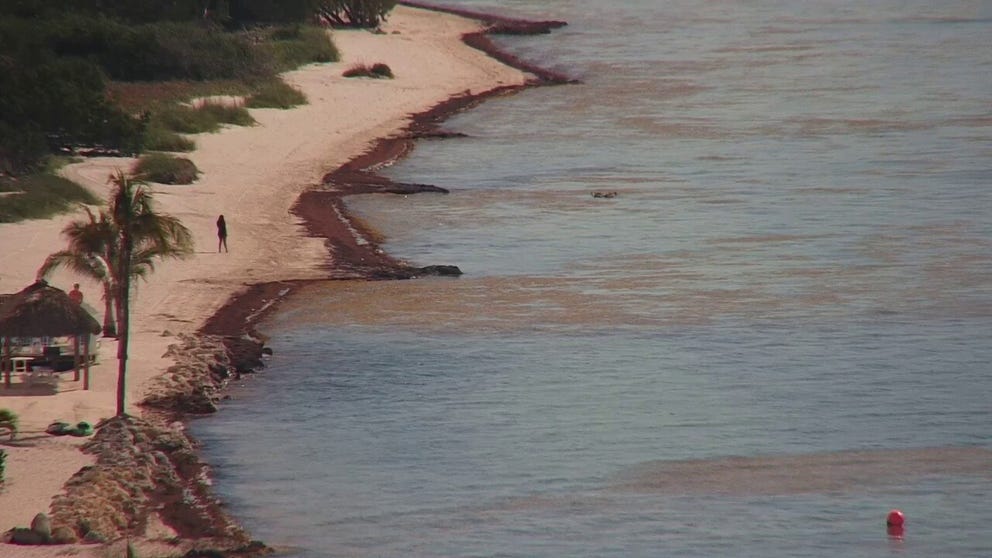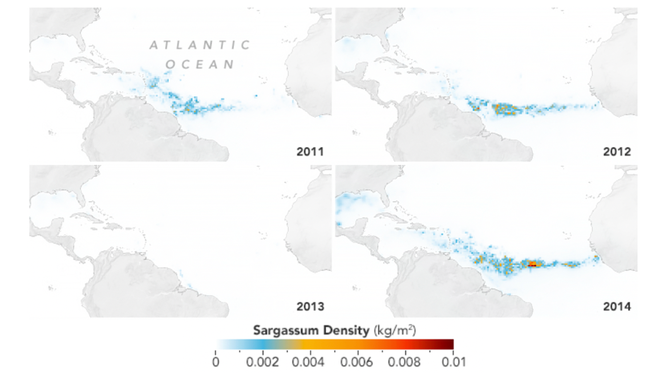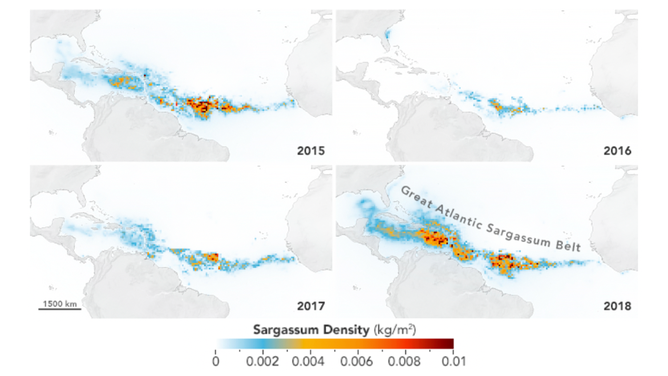Where does the seaweed blob in Florida come from?
When kept in check, Sargassum seaweed had been an oasis for wildlife in the Atlantic Ocean. In recent years, however, it has bloomed and become a hazard for both wild animals and humans.
Watch: Massive blob of sargassum seaweed invading Florida Keys
A 5,000-mile-wide blob of floating sargassum seaweed has reached the Florida Keys, and video from Cocoplum Beach on Easter Sunday in Marathon, Florida, shows it washing on shore and piled up along the beach.
Seaweed includes a wide variety of marine plants and algae around the world. Seaweed has a wide variety of purposes, with some species serving as a safe haven for wildlife while others are eaten as a healthy snack for humans.
But for beachgoers, particularly along the Gulf Coast, seaweed can become a pest as it can wash onto shorelines, create a foul odor and even become a health hazard.
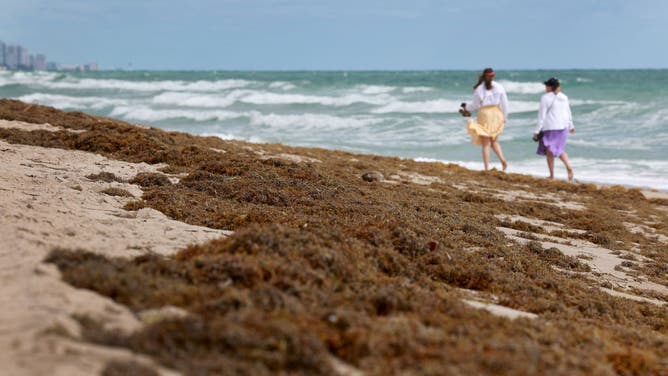
Beachgoers walk past seaweed that washed ashore on March 16, 2023 in Fort Lauderdale, Florida.
(Joe Raedle / Getty Images)
Much of this pest comes from a collection of floating rafts of brown seaweed known as Sargassum, stretching thousands of miles from the Gulf of Mexico to West Africa.
Called the Great Atlantic Sargassum Belt, this giant bloom of seaweed has grown nearly every year since 2011. According to NASA, in March 2023, the amount of Sargassum seaweed in the Belt totaled 13 million tons, the largest of any March on Record.
Why the Great Atlantic Sargassum Belt blooms

Colorful pixels show the location of the Great Atlantic Sargassum Belt. March 2023.
(NASA / NOAA)
The cause of this growth is not immediately clear, but scientists suggest a couple possible factors.
One of those factors involves the changing ocean circulation patterns. According to NASA, when sea surface temperatures are normal or cooler than average, the Sargassum grows faster.
PLAGUE OF MASSIVE SEAWEED BLOBS FORCE DAILY CLEANING OF FLORIDA BEACHES DURING SPRING BREAK
Another factor may be an increase in nutrient runoff resulting from deforestation of the Amazon. According to the Smithsonian, in 2009, severe flooding of the Amazon River brought the highest amount of nutrients into the ocean in 30 years, feeding the Sargassum seaweed.
Combined with the warmer ocean temperatures, the seaweed bloomed.
How the seaweed affects humans and wildlife
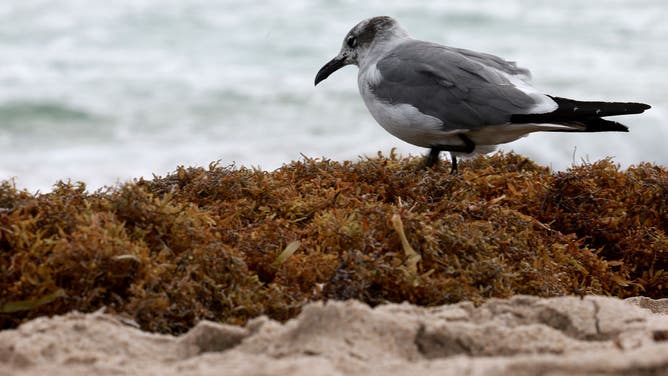
A seagull walks over seaweed that washed ashore on March 16, 2023 in Fort Lauderdale, Florida.
(Joe Raedle / Getty Images)
The thick rafts of Sargassum seaweed are then carried by ocean currents and washed onto beaches, such as those in South Florida and the Caribbean.
On the beach, NOAA said the seaweed rots and releases hydrogen sulfide gas, which smells like rotten eggs. According to the Florida Department of Health, hydrogen sulfide can irritate the eyes, nose and throat, which can be particularly problematic for people with asthma and other breathing conditions.
The massive seaweed bloom, while beneficial for wildlife in the right amount, may also suffocate wildlife. Fish and other creatures may die and wash ashore, leading to more unpleasant smells for humans.
